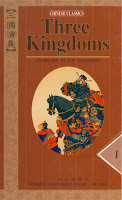From the management’s perspective managers
perform tasks, manage people and do business. Accordingly, there are numerous
methodologies and tools helping to manage business and people:
 (1) In Japan at Toyota Motor Company,
Taichii Ohno and Shigeo Shingo incorporated Ford’s type of production and some
other techniques into an approach named the Toyota Production System or Just In Time Production (JIT). The
inventory strategy strives to improve a business return on investment by
simultaneously reducing in-process inventory and associated costs.
(1) In Japan at Toyota Motor Company,
Taichii Ohno and Shigeo Shingo incorporated Ford’s type of production and some
other techniques into an approach named the Toyota Production System or Just In Time Production (JIT). The
inventory strategy strives to improve a business return on investment by
simultaneously reducing in-process inventory and associated costs.
(2) The core idea of a
Lean organization is to maximize customer value while minimizing
waste. Simply,
lean means creating
more value for customers with less resource.
(3) Iwao Kobayashi’s 20 keys is a longer list that can be used in
manufacturing audits. It reads very much like a “who’s who” of manufacturing
innovations and hence makes a very useful checklist.
(5) Business
Process Reengineering (BPR) is a top-down approach in which organizations
become more efficient and modernized. Reengineering is a fundamental rethinking
and radical redesign of business processes to achieve dramatic improvements in
cost, quality, speed and service.
(6) The
Self Directed Work Team (SDWT) is perhaps the most powerful organizational
concept that motivates, coordinates, solves problems and also makes better
decision than an individual could. But this performance comes at a price: decisions
are slow, work teams require extensive training and months to mature.
(7) Total
Quality Management (TQM) is a set of management practices throughout the
organization geared to continuously improve the business processes in order to
ensure that the organization consistently meets or exceeds in satisfying a
customer or a supplier.
(8) … others.
 The third
example I would like to share with you is the historical novel Three Kingdoms, written in the tradition
of the Spring and Autumn Annals which are attributed to Confucius. The
historical novel of the Three Kingdoms is so important because it describes
The third
example I would like to share with you is the historical novel Three Kingdoms, written in the tradition
of the Spring and Autumn Annals which are attributed to Confucius. The
historical novel of the Three Kingdoms is so important because it describes 






